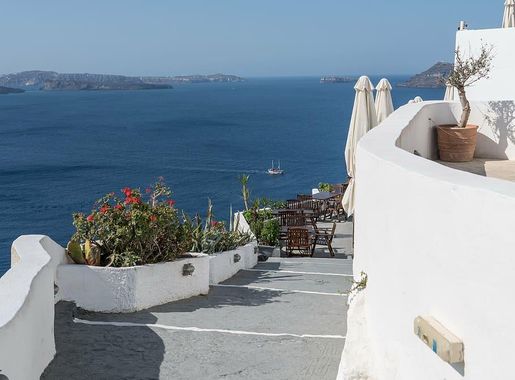
Fira: The Heart of Santorini's Magic
Discover Fira: Santorini's vibrant capital, where breathtaking views, rich history, and lively nightlife converge for an unforgettable Greek island experience.
Fira, the vibrant capital of Santorini, is a stunning blend of traditional Greek charm and modern attractions. Perched on the edge of a dramatic cliff, Fira offers breathtaking views of the caldera, the iconic volcanic crater filled with azure waters. Whether you're meandering through its narrow cobblestone streets, savoring local delicacies at a taverna, or exploring its unique shops and boutiques, Fira promises an unforgettable experience. Fira's architectural beauty is a sight to behold, with its whitewashed buildings crowned with blue domes, creating a picturesque canvas against the backdrop of the expansive Aegean Sea. The town is a cultural hub, home to fascinating museums such as the Archaeological Museum of Thera and the Museum of Prehistoric Thera, where you can delve into the rich history of the island. As the sun sets, Fira transforms into a lively hotspot, with its bustling nightlife offering a wealth of bars and clubs where you can dance the night away. For those seeking relaxation, Fira's proximity to some of the island's most beautiful beaches ensures that a day of sunbathing and swimming is never far away. Additionally, the town serves as a gateway to various excursions, including boat trips to the nearby volcanic islands and hot springs. With its captivating scenery, vibrant atmosphere, and wealth of activities, Fira is a must-visit destination for any traveler exploring the wonders of Santorini.
Local tips in Fira
- Visit the Archaeological Museum of Thera to explore artifacts from the island's ancient past.
- Take a cable car ride down to the old port for a unique perspective of the caldera.
- Try the local specialty, tomatokeftedes (tomato fritters), at a traditional taverna.
- Catch the sunset from a rooftop bar for a magical end to your day.
- Wear comfortable shoes; Fira's streets are steep and cobblestoned.
- Plan your visit during the shoulder seasons (spring or autumn) to avoid the peak summer crowds.
Fira: The Heart of Santorini's Magic
Fira, the vibrant capital of Santorini, is a stunning blend of traditional Greek charm and modern attractions. Perched on the edge of a dramatic cliff, Fira offers breathtaking views of the caldera, the iconic volcanic crater filled with azure waters. Whether you're meandering through its narrow cobblestone streets, savoring local delicacies at a taverna, or exploring its unique shops and boutiques, Fira promises an unforgettable experience. Fira's architectural beauty is a sight to behold, with its whitewashed buildings crowned with blue domes, creating a picturesque canvas against the backdrop of the expansive Aegean Sea. The town is a cultural hub, home to fascinating museums such as the Archaeological Museum of Thera and the Museum of Prehistoric Thera, where you can delve into the rich history of the island. As the sun sets, Fira transforms into a lively hotspot, with its bustling nightlife offering a wealth of bars and clubs where you can dance the night away. For those seeking relaxation, Fira's proximity to some of the island's most beautiful beaches ensures that a day of sunbathing and swimming is never far away. Additionally, the town serves as a gateway to various excursions, including boat trips to the nearby volcanic islands and hot springs. With its captivating scenery, vibrant atmosphere, and wealth of activities, Fira is a must-visit destination for any traveler exploring the wonders of Santorini.
Iconic landmarks you can’t miss
Santorini Old Harbor
Experience the breathtaking views, rich history, and vibrant atmosphere at Santorini Old Harbor, the jewel of Fira on the stunning island of Santorini.
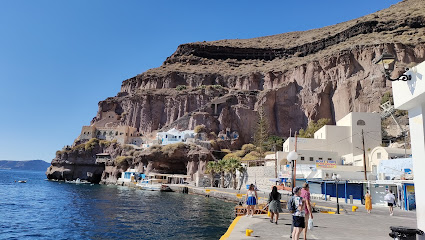
Three Bells of Fira
Explore the iconic Three Bells of Fira, a breathtaking landmark in Santorini, known for its stunning architecture and panoramic views of the Aegean Sea.
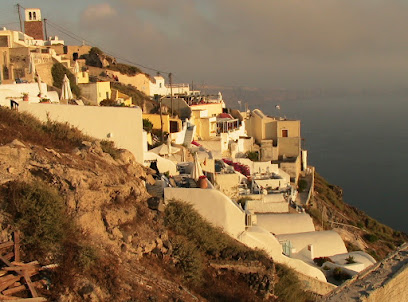
Museum of Prehistoric Thera
Explore the ancient past of Santorini at the Museum of Prehistoric Thera, a must-visit archaeological museum in Fira showcasing Minoan artifacts.

Fira
Discover breathtaking views and vibrant culture in Fira, the picturesque capital of Santorini, where sunsets paint the caldera with hues of gold.
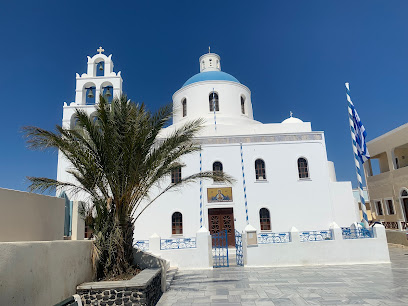
Fira Theotokopoulos Main Square
Discover the vibrant atmosphere of Fira Theotokopoulos Main Square, Santorini's hub of culture, shopping, and breathtaking views.
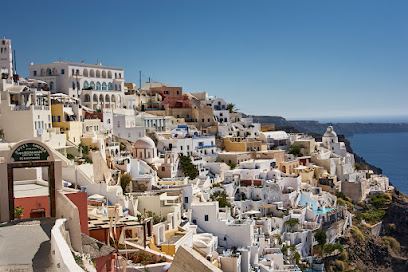
Cathedral of Saint John the Baptist
Explore the stunning Cathedral of Saint John the Baptist in Fira, Santorini, and immerse yourself in its architectural beauty and spiritual serenity.
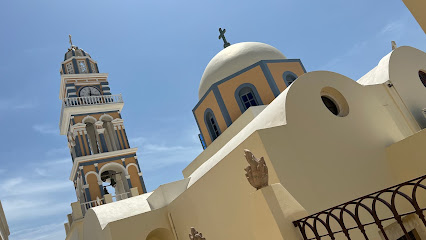
Cable car of Santorini
Discover breathtaking views and an unforgettable experience at the Cable Car of Santorini, transporting you over stunning landscapes and azure waters.
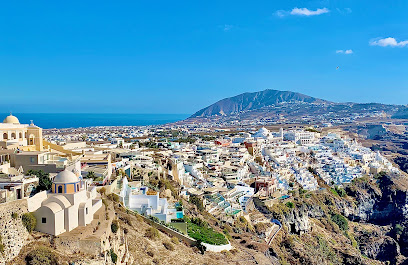
Church of Agios Gerasimos
Discover the serene beauty of the Church of Agios Gerasimos in Fira, a stunning Greek Orthodox church with breathtaking views and rich cultural significance.
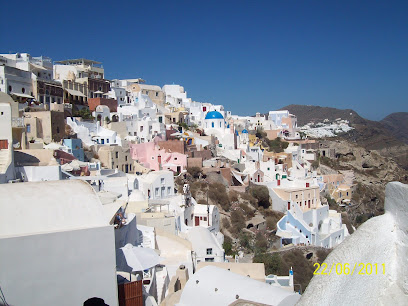
Karavolades Stairs
Experience the breathtaking views of the Aegean Sea while descending the iconic Karavolades Stairs on Santorini, a must-visit for all travelers.
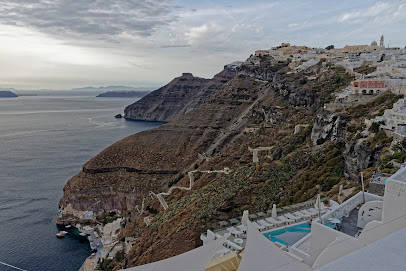
Panoramic View Fira
Experience the breathtaking sunset views at Panoramic View Fira, a must-visit attraction in Santorini, where beauty meets tranquility.
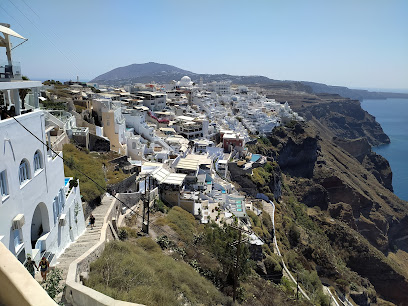
MATI Art Gallery Fira
Explore contemporary Greek art at MATI Art Gallery in Fira, Santorini, where creativity meets breathtaking views in a vibrant cultural experience.
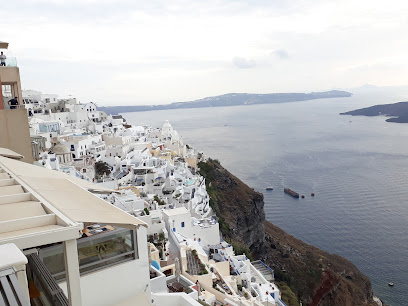
Mati Art Gallery
Explore contemporary art at the Mati Art Gallery in Fira, Santorini, a cultural gem showcasing local talent amidst stunning views.
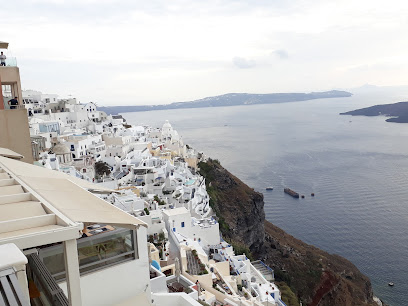
Megaro Gizi
Explore the cultural heart of Santorini at Megaro Gizi, where history and art intertwine in a beautifully restored 19th-century mansion.
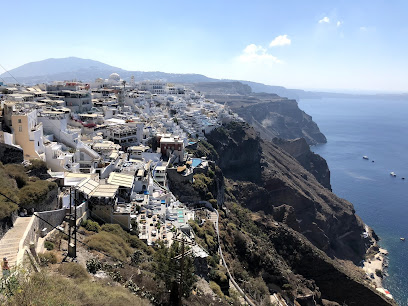
Three Bells of Fira iconic viewpoint
Discover the breathtaking Three Bells of Fira viewpoint in Santorini, where stunning vistas and rich cultural heritage come together for an unforgettable experience.
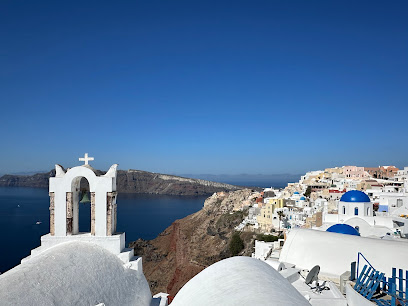
Sunset Fira
Experience the magical sunsets of Santorini at Sunset Fira, where breathtaking views and vibrant atmosphere await every traveler.
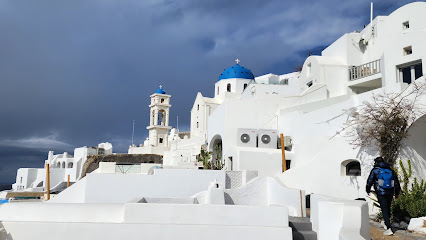
Unmissable attractions to see
Fira Theotokopoulos Main Square
Experience the vibrant atmosphere and breathtaking views at Fira Theotokopoulos Main Square, the heart of Santorini's cultural scene.
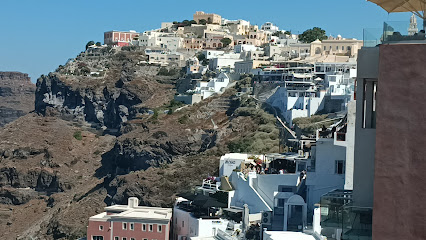
Panoramic View Fira
Experience the stunning vistas of Santorini at Panoramic View Fira, a breathtaking viewpoint overlooking the Aegean Sea and the caldera.
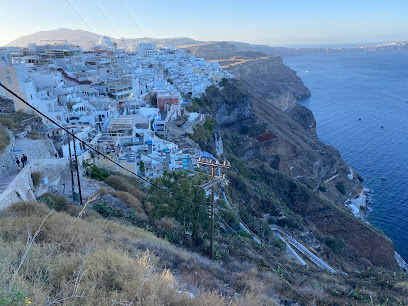
Sunset Fira
Discover the enchanting views of Sunset Fira, a breathtaking tourist attraction in Santorini, Greece, perfect for sunset lovers and photographers.
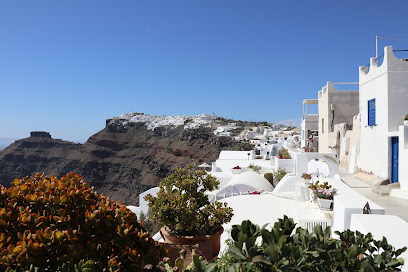
Santorini Cable Car Overlook
Discover the stunning views of Santorini from the Cable Car Overlook, where adventure meets breathtaking natural beauty.
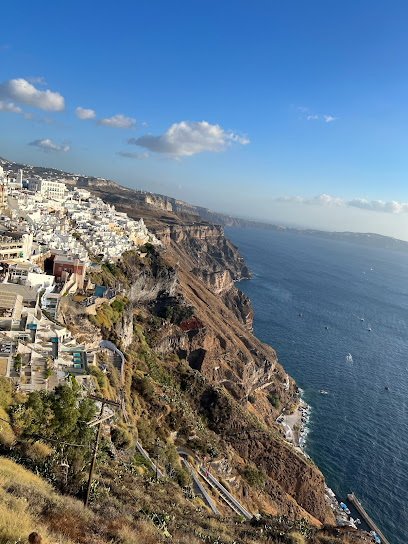
Petite ruine
Explore the serene beauty and historical allure of Petite Ruine, a hidden gem in Santorini offering breathtaking views and rich cultural heritage.
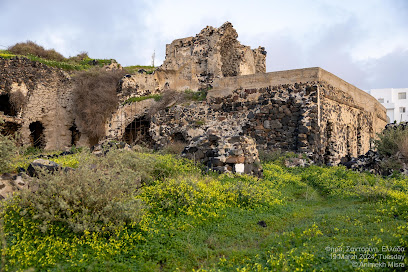
Abandoned Boat
Explore the haunting beauty of the Abandoned Boat in Fira, a captivating tourist attraction with stunning views and rich maritime history.

Sunrise point Fira
Experience the breathtaking beauty of sunrise over the caldera at Sunrise Point Fira, the must-visit spot in Santorini for stunning views and tranquility.
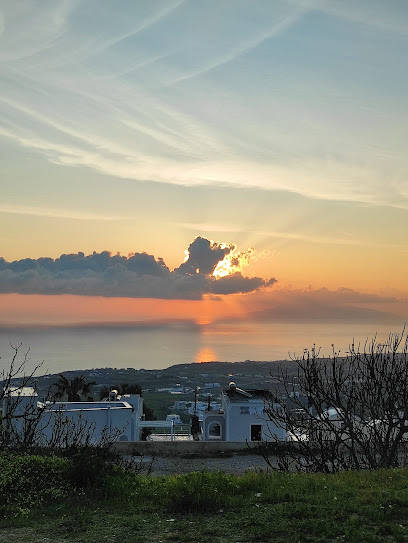
Santorini Walking Tour
Experience Santorini's breathtaking landscapes, rich history, and vibrant culture on an unforgettable walking tour through this stunning Greek island.
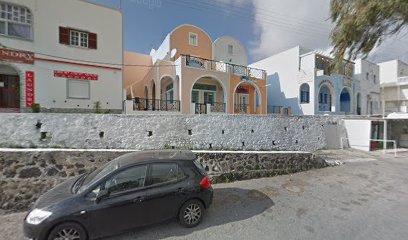
Essential places to dine
Pelican Kipos cafe and wine restaurant
Discover exquisite Greek cuisine paired with fine wines at Pelican Kipos Cafe in Fira - a must-visit culinary destination in Santorini.
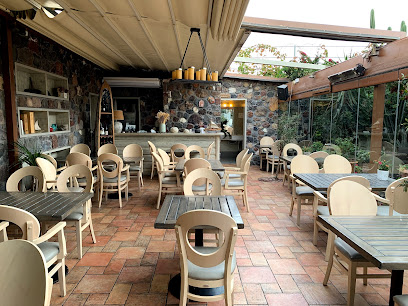
Parea Tavern
Experience the essence of Greek cuisine at Parea Tavern in Fira, Santorini - where tradition meets breathtaking views.

Argo Restaurant
Discover the exquisite flavors of Mediterranean cuisine at Argo Restaurant in Fira - where tradition meets modernity against stunning sea views.
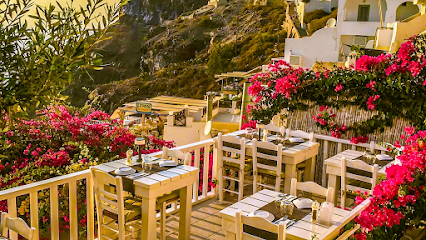
Triana Tavern
Discover authentic Mediterranean flavors at Triana Tavern in Fira - where every dish tells a story.
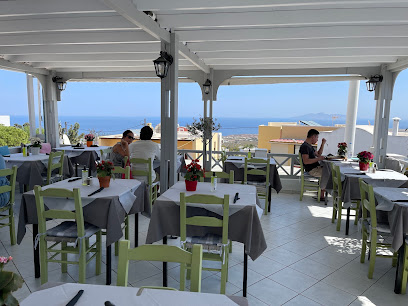
Naoussa
Savor the essence of Santorini at Naoussa: A haven for authentic Greek cuisine amidst stunning views.
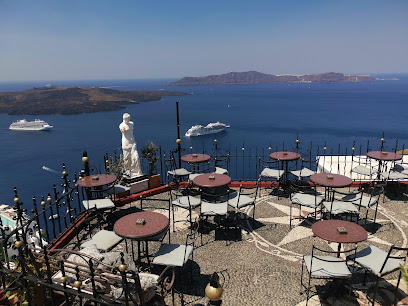
Ouzeri
Experience the authentic flavors of Greece at Ouzeri in Fira - where tradition meets stunning views.

Fanari
Experience authentic Greek flavors at Fanari Restaurant in Fira - where breathtaking views meet culinary excellence.
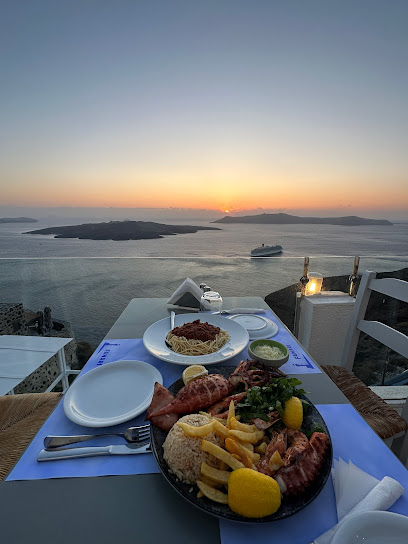
Mama's Restaurant & Wine Bar
Discover authentic Greek cuisine with stunning views at Mama's Restaurant & Wine Bar in Fira, Santorini.
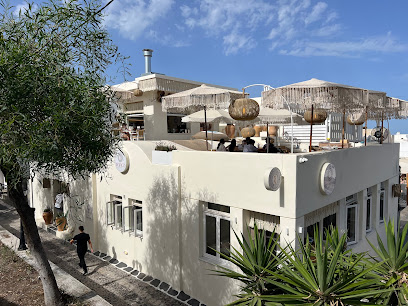
Tholoto Brunch & Restaurant
Experience authentic Greek cuisine at Tholoto Brunch & Restaurant in Fira - where every meal is crafted with love and local ingredients.
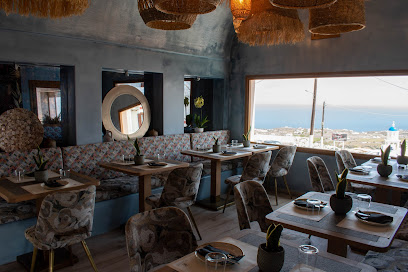
Theoni’s Restaurant
Experience authentic Greek cuisine at Theoni’s Restaurant in Fira, where every dish tells a story amidst stunning Aegean views.
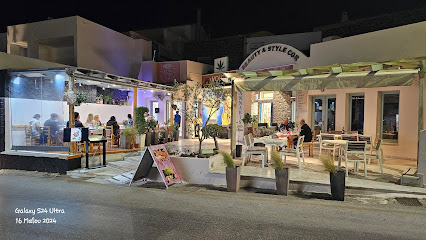
Markets, malls and hidden boutiques
Fabrica Shopping Center
Explore the dynamic Fabrica Shopping Center in Fira, where shopping, dining, and local art come together for an unforgettable experience in Santorini.
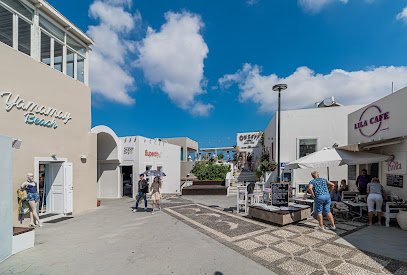
Folli Follie Store
Explore the elegance of Folli Follie Store in Fira, where fashion accessories and jewelry meet luxury and style amidst the stunning backdrop of Santorini.
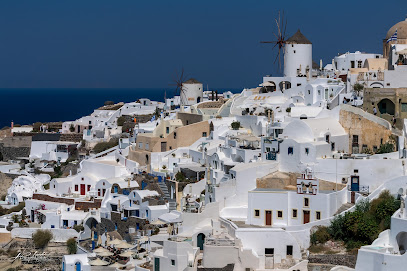
TEPHRA Santorini Exclusive designers Boutique
Explore TEPHRA Santorini, where exclusive designer fashion meets the stunning beauty of the island, offering unique clothing and accessories for every style.

Spicy Boutique-The Lace
Discover unique clothing and accessories at Spicy Boutique/The Lace, a stylish shopping destination in the heart of Santorini.

NOI
Discover the elegance of Santorini at NOI, a boutique offering unique fashion and accessories that capture the island's essence.
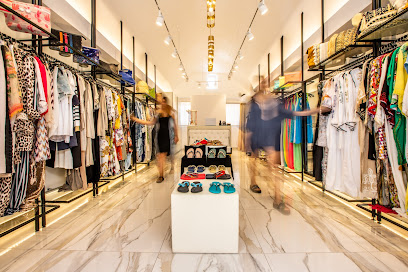
Martini Greek Clothes & Jewelry
Explore the elegance of Greek fashion at Martini Greek Clothes & Jewelry in Fira, offering unique styles and traditional craftsmanship.
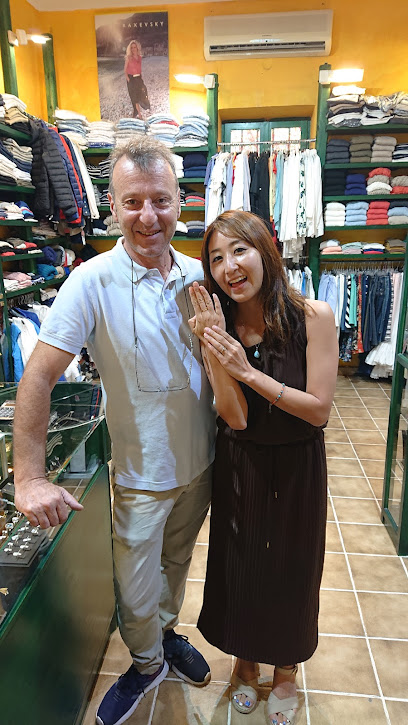
2Friends Fira Santorini
Explore the stylish offerings of 2Friends Fira Santorini, where fashion meets the beauty of Greek island life.
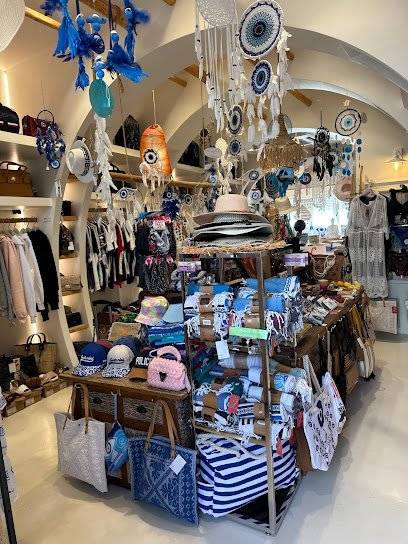
Memories of Santorini
Explore Memories of Santorini for unique souvenirs that capture the island's beauty and culture.
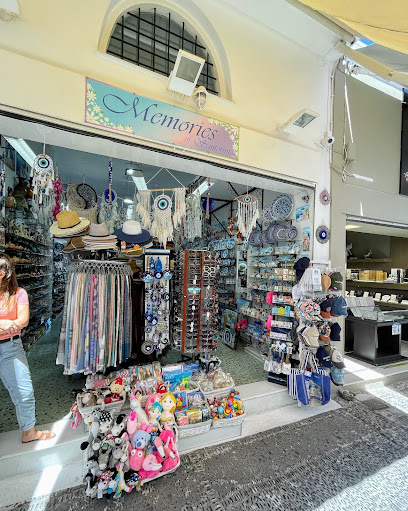
Santorinian Products
Explore the charm of Santorinian Products in Fira, where local artistry meets unique treasures for an unforgettable shopping experience.

Gavallas Souvenir
Discover authentic Greek treasures at Gavallas Souvenir in Fira, where every piece reflects the beauty and culture of Santorini.

Essential bars & hidden hideouts
2 Brothers Bar Santorini
Experience the lively ambiance and exquisite cocktails at 2 Brothers Bar, Santorini's premier nightlife destination.
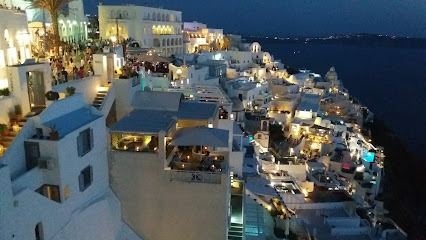
PK Cocktail Bar
Experience the vibrant nightlife at PK Cocktail Bar in Fira, Santorini, where innovative cocktails meet stunning caldera views for an unforgettable evening.
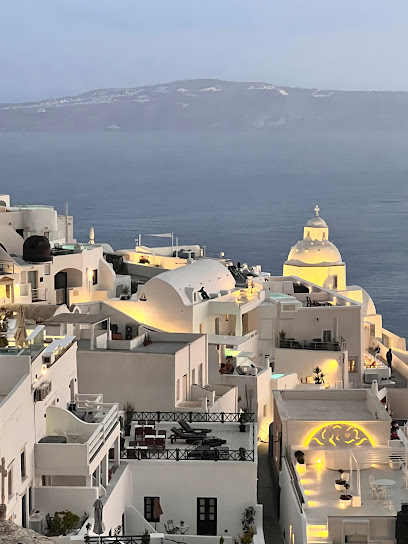
Murphy's Bar
Experience the vibrant nightlife of Santorini at Murphy's Bar, where innovative cocktails and stunning caldera views await you.
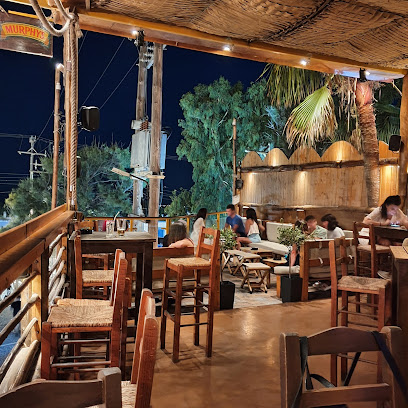
Stoa Bar Santorini Fira
Discover the captivating atmosphere of Stoa Bar in Fira, Santorini, where exquisite cocktails and delightful café treats await in a vibrant setting.
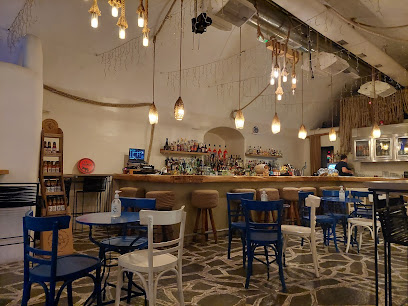
Tropical Bar
Experience Santorini's vibrant nightlife at Tropical Bar, where tropical cocktails and stunning views create unforgettable memories.
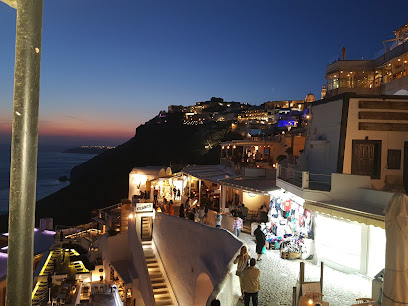
The Vine Cocktail & Wine Restaurant
Experience Santorini's vibrant culinary scene at The Vine Cocktail & Wine Restaurant, where exquisite cocktails and local wines await.
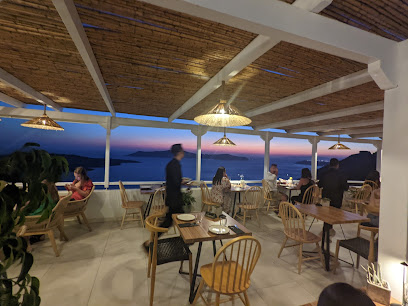
Kira Thira Jazz Bar
Experience the enchanting atmosphere of Kira Thira Jazz Bar in Fira, where live music meets stunning views and delightful drinks.
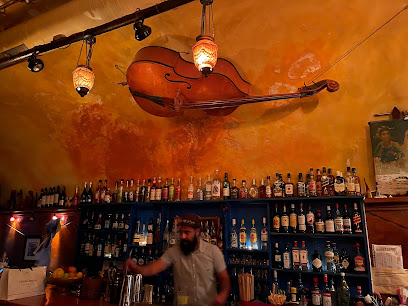
Lux Bar Santorini
Experience the vibrant nightlife of Santorini at Lux Bar, where stunning views and delicious cocktails create unforgettable memories.
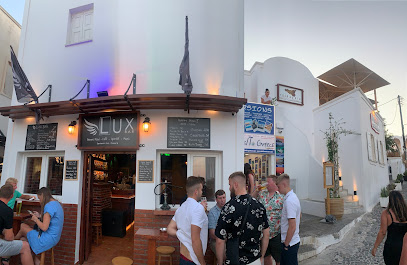
Aion Cocktail Bar & Bistro
Experience exquisite cocktails and Mediterranean delights at Aion Cocktail Bar & Bistro, overlooking the stunning Aegean Sea in Fira, Santorini.
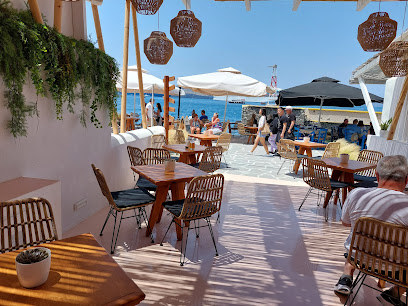
Cocκtail Bar Restaurant One
Cocktail Bar Restaurant One: Experience the best cocktails in Fira with stunning caldera views and a vibrant atmosphere.
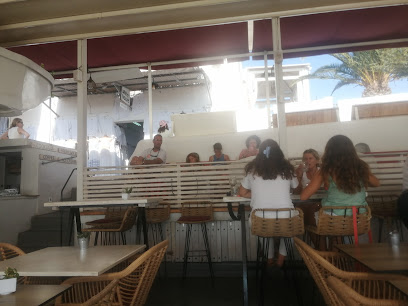
Local Phrases
-
- HelloΓειά σας
[Yah sas] - GoodbyeΑντίο
[Adio] - YesΝαι
[Neh] - NoΌχι
[Ohi] - Please/You're welcomeΠαρακαλώ
[Parakalo] - Thank youΕυχαριστώ
[Efharisto] - Excuse me/SorryΣυγνώμη
[Signomi] - How are you?Πώς είστε;
[Pos iste?] - Fine. And you?Καλά. Εσείς;
[Kala. Esis?] - Do you speak English?Μιλάτε αγγλικά;
[Milate anglika?] - I don't understandΔεν καταλαβαίνω
[Den katalaveno]
- HelloΓειά σας
-
- I'd like to see the menu, pleaseΘα ήθελα να δω το μενού, παρακαλώ
[Tha ithela na do to menou, parakalo] - I don't eat meatΔεν τρώω κρέας
[Den troo kreas] - Cheers!ΥΓΕΙΑ!
[Yia] - I would like to pay, pleaseΘα ήθελα να πληρώσω, παρακαλώ
[Tha ithela na plirosso, parakalo]
- I'd like to see the menu, pleaseΘα ήθελα να δω το μενού, παρακαλώ
-
- Help!Βοήθεια!
[Voeetheea] - Go away!Φύγε!
[Fige] - Call the Police!Καλέστε την Αστυνομία!
[Kaleste tin Astinomia] - Call a doctor!Καλέστε ένα γιατρό!
[Kaleste ena yatro] - I'm lostΈχω χαθεί
[Eho hathi] - I'm illΕίμαι άρρωστος
[Eime arrostos]
- Help!Βοήθεια!
-
- I'd like to buy...Θα ήθελα να αγοράσω...
[Tha ithela na agoraso] - I'm just lookingΑπλά κοιτάζω
[Apla kitazo] - How much is it?Πόσο κοστίζει;
[Poso kostizi?] - That's too expensiveΑυτό είναι πολύ ακριβό
[Afto ine poli akribo] - Can you lower the price?Μπορείτε να μειώσετε την τιμή;
[Borite na miosete tin timi?]
- I'd like to buy...Θα ήθελα να αγοράσω...
-
- What time is it?Τι ώρα είναι;
[Ti ora ine?] - It's one o'clockΕίναι μία ώρα
[Ine mia ora] - Half past (10)Μισή (10)
[Misi (deka)] - MorningΠρωί
[Proi] - AfternoonΑπόγευμα
[Apoyevma] - EveningΒράδυ
[Vradi] - YesterdayΧθες
[Hthes] - TodayΣήμερα
[Simera] - TomorrowΑύριο
[Avrio] - 1Ένα
[Ena] - 2Δύο
[Dio] - 3Τρία
[Tria] - 4Τέσσερα
[Tessera] - 5Πέντε
[Pente] - 6Έξι
[Exi] - 7Επτά
[Epta] - 8Οκτώ
[Okto] - 9Εννέα
[Ennea] - 10Δέκα
[Deka]
- What time is it?Τι ώρα είναι;
-
- Where's a/the...?Πού είναι ένα/το...;
[Pou ine ena/to?] - What's the address?Ποια είναι η διεύθυνση;
[Pia ine i diefthinsi?] - Can you show me (on the map)?Μπορείτε να μου δείξετε (στο χάρτη);
[Borite na mou dixete (sto charti)?] - When's the next (bus)?Πότε είναι το επόμενο (λεωφορείο);
[Pote ine to epomeno (leoforeio)?] - A ticket (to ....)Ένα εισιτήριο (για το...);
[Ena isitirio (ya to...)?]
- Where's a/the...?Πού είναι ένα/το...;
History of Fira
-
The history of Fira can be traced back to ancient times when the island was inhabited by the Minoans around 2000 BC. The remnants of Ancient Thera, located on the mesa of Profitis Ilias, showcase the advanced civilization that once thrived here. The archaeological site contains ruins of temples, homes, and public buildings that reflect the cultural and economic activities of its inhabitants.
-
Fira was significantly impacted by the devastating earthquake of 1956, which destroyed many buildings and altered the landscape of the town. Following this disaster, the local community rallied to rebuild, leading to a transformation in the architectural style and urban planning of the area. This event marked the beginning of Fira's evolution into a major tourist destination.
-
Throughout the centuries, Fira has been a hub of trade and cultural exchange due to its strategic location. The influence of various civilizations, including the Venetians and Ottomans, can be seen in the architecture and local customs. The blend of these different cultures has shaped the unique character of Fira, evident in its vibrant festivals, gastronomy, and arts.
-
The late 20th century saw a significant rise in tourism in Fira, as visitors were drawn to its stunning views of the caldera and its picturesque streets. This influx of tourists led to economic growth and the development of hospitality services, transforming Fira into one of Greece's premier travel destinations. The town's infrastructure has adapted over the years to accommodate the growing number of travelers.
-
Today, Fira represents a blend of its rich historical heritage and modern influences. The town is known for its stunning sunsets, vibrant nightlife, and a plethora of art galleries and shops. Traditional Cycladic architecture coexists with contemporary developments, making Fira a dynamic neighborhood that continues to evolve while honoring its past.
Fira Essentials
-
Fira is the capital of Santorini and is easily accessible from other neighborhoods. If you are arriving from the airport, taxis and shuttle buses are available that take you directly to Fira in about 15-20 minutes. If you are coming from Oia, a local bus service operates frequently, with a travel time of approximately 30 minutes. For those in Kamari or Perissa, the bus service also connects to Fira, making it a convenient option for travelers.
-
Fira is compact and best explored on foot. The town features numerous narrow streets and paths, perfect for a leisurely stroll. Local buses connect Fira to other parts of the island, including Oia, Kamari, and Akrotiri. For a unique experience, consider renting a bicycle or scooter to explore the island at your own pace. Taxis are readily available, but be aware that they can be pricier, especially during peak tourist seasons.
-
Fira is generally a safe neighborhood for tourists. However, like any tourist destination, it is wise to remain cautious. Petty crimes such as pickpocketing can occur, especially in crowded areas. Be particularly careful in places like the bus station and the busy market streets. Avoid poorly lit areas at night and keep your belongings secure.
-
In case of an emergency, dial 112 for immediate assistance. Hospitals and clinics are available in Fira, with the main hospital located just outside the town. It is advisable to have travel insurance that covers medical emergencies. Pharmacies are also present for minor health issues, offering over-the-counter medications.
-
Fashion: Do dress modestly when visiting religious sites; avoid revealing clothing. Religion: Do respect local customs; cover your shoulders and knees when entering churches. Public Transport: Do be courteous to fellow passengers; offer your seat to the elderly. Don't eat or drink on public transport. Greetings: Do greet locals with a smile and a friendly 'Kalimera' (Good Morning). Eating & Drinking: Do try local dishes and wines; don’t waste food, as it is regarded as disrespectful.
-
To experience Fira like a local, visit the lesser-known tavernas and eateries away from the main tourist paths, where you can savor authentic Greek cuisine. Engage with local shopkeepers to learn about the island's history and traditions. For a unique experience, explore the hiking trail from Fira to Oia, which offers stunning views of the caldera and is less crowded than the main streets.
-
When visiting churches and monasteries, it's customary to remain quiet and respectful. Photography may be restricted in certain areas, so always ask for permission when in doubt. Tipping is appreciated in restaurants and cafes; rounding up the bill or leaving a 10% tip is common practice.
-
The best time to visit Fira is during the shoulder seasons of late spring (April to June) and early fall (September to October). During these months, the weather is pleasant, and the tourist crowds are thinner, allowing for a more authentic experience of the island.
Trending Landmarks in Fira
-
Santorini Old Harbor
-
Three Bells of Fira
-
Museum of Prehistoric Thera
-
Fira
-
Fira Theotokopoulos Main Square
-
Cathedral of Saint John the Baptist
-
Cable car of Santorini
-
Church of Agios Gerasimos
-
Karavolades Stairs
-
Panoramic View Fira
-
MATI Art Gallery Fira
-
Mati Art Gallery
-
Megaro Gizi
-
Three Bells of Fira iconic viewpoint
-
Sunset Fira
Nearby Cities to Fira
-
Things To Do in Pyrgos
-
Things To Do in Mykonos
-
Things To Do in Heraklion
-
Things To Do in Crete
-
Things To Do in Rethymno
-
Things To Do in Chania
-
Things To Do in Kos
-
Things To Do in Bodrum
-
Things To Do in Samos
-
Things To Do in Kusadasi
-
Things To Do in Athens
-
Things To Do in Ephesus
-
Things To Do in Rhodes
-
Things To Do in Marmaris
-
Things To Do in Nafplio





